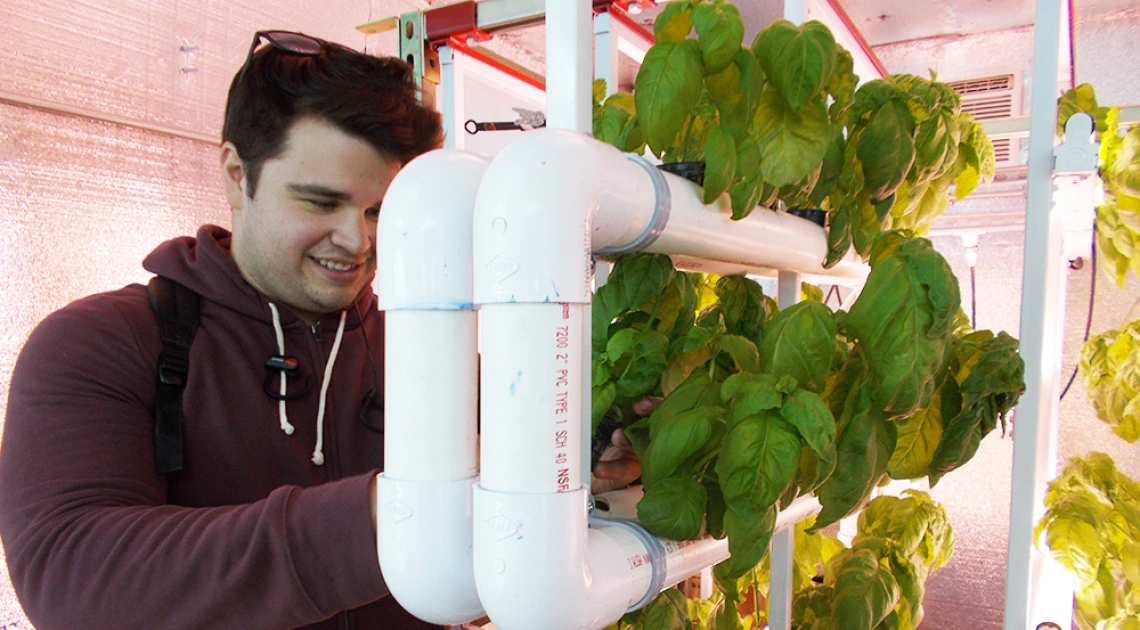Tech Blog: The V-Hive Green Box; How one UA Professor is Bringing Outside Farming In

| Listen to the eighth episode of our podcast, Invented Arizona, where we speak with Joel Cuello about his vertical farming technnology called the Vertical Hive (V-Hive) Green Box.
|
Methods of cultivating agriculture have been evolving for centuries, dating as far back as 10,000 BCE when agriculture began in the Middle East [1]. Today, the concept of the vertical farm is being introduced to relieve the burden of feeding the millions of people who are leaving rural settings behind for life in larger cities. While implementing vertical farming techniques helps to reduce concerns over excessive agricultural land use, it can also be extremely costly in cases requiring the design and construction of conventional buildings for vertical farming use.
Having focused his research career on controlled environment agriculture, Joel Cuello, Ph.D., a professor of biosystems engineering in the Agricultural & Biosystem Engineering department at the University of Arizona, recognized an opportunity for vertical farms to flourish in modular containers or warehouses by developing a vertical, modular growth system called The Vertical-Hive (V-Hive) Green Box. The V-Hive combines all the benefits of indoor farming like variable control and process optimization into a completely modular system that can be adjusted to suit a wide variety of spaces like existing greenhouses and high rises.
The V-Hive also features a number of design elements to maximize the quantity of crops grown in a given volume of space including sliding growth and lighting boards, sliding growth tubes, and hydroponics components, which reduce water consumption by 80-90% compared to traditional open field production. This concept is highly intriguing for those in areas like Saudi Arabia and the United Arab Emirates where they are encouraging local growers and businessmen to develop vertical farming due to the lack of arable land.
“The idea really is to use up the entire volume of the modular unit for production so that no volume of space is wasted” said Cuello.
While the current V-Hive prototype is operated manually, it was developed with automation in mind; robots will soon be able to perform operational tasks including harvesting, gathering, and transporting crops from the Green Box.
To learn more about this technology, visit:
Check out these additional agricultural engineering technologies available from the University of Arizona:
UA15-098 Seed Metering System and Apparatus for Precision Planting of Seed
Resources:
[1] “Agriculture Timeline.” Agriculture Timeline , Ancient History Encyclopedia, www.ancient.eu/timeline/Agriculture/(link is external).
[2] Harris, Amy. “How Much of the Earth's Land Is Farmable?” SCIENCING, sciencing.com/much-earths-land-farmable-16685.html.

